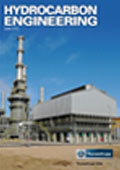Editorial comment
Man has always been an innovator, an inventor and discoverer. Neanderthal man discovered fire and we haven’t stopped since. Karl Benz invented the first practical petrol engine in 1885. Henry Ford brought the first commercial automobile, the Model T Ford, into production in 1908. 104 years later the industry is still developing and expanding, and there are 62 companies that can be considered the world’s main automobile manufacturers. Computers have had just as exciting a journey. The ENIAC (Electric Numerical Integrator and Computer) was the first all purpose computer. It was showcased to the world in 1946, weighed 30 t, had 19 000 vacuum tubes, 6000 switches and could add together 5000 numbers a second. It was a revolutionary invention. Yet today, my calculator can do more than that, not to mention my mobile phone and home PC.
Register for free »
Get started now for absolutely FREE, no credit card required.
The oil and gas industry cannot be left out of this very brief analysis of innovation in our industrial history, as developments and discoveries within the sector have been many. Samuel M. Kier of Pennsylvania, USA, was the first person to refine crude oil in the mid 1840s. In 1913 William Burton was awarded a patent for thermal cracking, a patent considered by many to be the most important in the history of petroleum refining. Yet, the recorded history of the oil industry can go back even further. In 1788 Sir Alexander Mackenzie discovered bitumen in the Athabasca region of Canada, he mixed the bitumen with gum to patch up holes in canoes. The natural gas industry can go back even further. It has been reported that in 500 B.C. the Chinese used pipelines fashioned out of bamboo to direct natural gas that was escaping from the ground to separate salt from seawater. The British were the first to utilise natural gas in a commercial way in 1785 when it was used to light homes and street lamps. This technology made its way to the US in 1816.
Fast forward to today and it is being said by parties outside the oil and gas industry that modernisation within the sector has been stagnant and slow to react to global issues and challenges. Yet there is always news of turnarounds, upgrades, maintenance and improvements being made to oil and gas facilities seeping into inboxes, newswires and RSS feeds. This only just starts to scratch the surface. Natural gas technologies are forever appearing and sector growth is continuously increasing, as it is the cleaner of the fossil fuels. Biofuels developments are now heading towards the third generation as our industry becomes forever greener. The American Petroleum Institute states in a recent report that ‘between 2000 and 2010, the US oil and natural gas industry invested US$ 71 billion in technologies that reduce GHGs, far more than the federal government (US$ 43 billion) and almost as much as the rest of the domestic private industry combined (US$ 74 billion).’1 The discovery and development of shale gas is the most recent example of the updating and creation of new technologies within our industry, which is happening at an astounding pace. This boom is unlikely to stop anytime soon as the industry is continuously looking for better environmental practices and revolutionary ideas, such as extracting bitumen from the carbonate reservoirs, despite what some may report. So, it can be argued, just from the examples above, that at the moment there doesn’t appear to be room for scepticism about the levels and rate of innovation and invention within the oil and gas industry.
This month Hydrocarbon Engineering will be at ACHEMA, Frankfurt from 18 – 22 June and there is no shortage of innovative technologies, processes and solutions on display there. If you are at the event I’ll be at Hall 9.2 Stand D1, it’ll be good to meet you.
1. API ‘American Made Energy: Report to the Platform Committees.’

